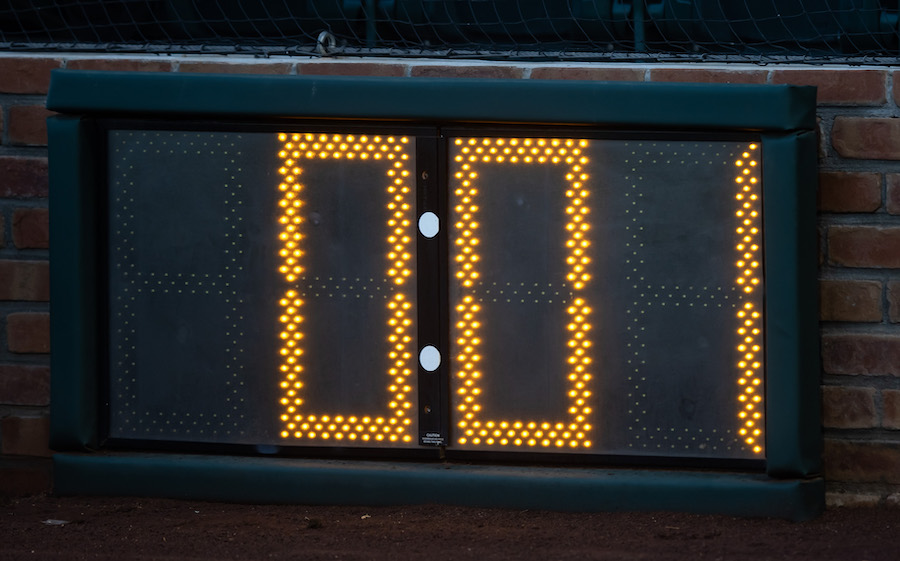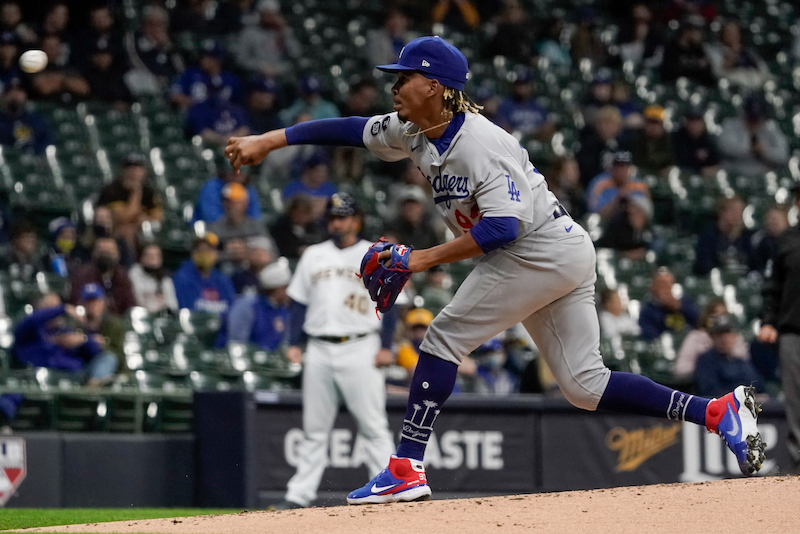At the start of the 2023 season, Major League Baseball announced three new rule changes that would go into effect beginning in Spring Training, with a pitch timer chief among them.
At first, players had some trouble adjusting to the new clock with 305 total violations in March and April, which game out to an average of 0.72 per game. However, it gradually decreased each month of the season all the way down to just 98 in September — an average of 0.27 per game.
The pitch clock is remaining as is for the postseason, despite some hoping for slightly longer times. However, MLB is changing the way the process works.
In the regular season, field timing coordinators worked at each park to control the timer, and they stayed at one stadium for the entire year.
The processes they go through were not made public, but Eno Sarris and Matt Gelb of The Athletic shared some of the details and how MLB is adjusting the pitch timer process for the postseason:
According to a source with knowledge of the process, the FTC can talk with the umpiring crew during games and often meets with them ahead of time to have a good understanding of the nuances of the ballpark and the umpire’s timing. Having specific clock handlers be assigned to an entire series (instead of one park) should ideally lead to consistent enforcement and good lines of communication between the umpiring crew and the FTC.
The goal is to avoid as many possible clock violations and timer errors in important postseason moments, which could change the narrative on the rule changes after a largely successful debut season.
In 2023, the average length of a nine-inning game was 2 hours and 40 minutes, which was a 30-minute decrease since 2021 and 24 minutes shorter than in 2022. The average time of a game in 2023 was also MLB’s quickest mark since 1985.
Overall, MLB saw its biggest year-over-year increase in attendance since 1993 and the 2023 season was the most streamed year on MLB.TV in history, up 9% from 2022 with 12.7 billion minutes watched.
MLB pitch timer rules
The pitch timer rule states a pitcher must begin his motion before the expiration of the 15-second clock, or 20 seconds with at least one runner on base.
Pitchers are allowed to step off the rubber twice per plate appearance without penalty, which resets the clock. Anymore disengagements will result in a balk unless an out is recorded on a runner. Additionally, the pitch clock resets if the baserunner advances.
From the other side, a hitter must be in the batter’s box and alert to the pitcher with at least eight seconds remaining, and they receive one timeout per plate appearance.
Have you subscribed to the Dodger Blue YouTube channel? Be sure to ring the notification bell to watch player interviews, participate in shows and giveaways, and stay up to date on all Dodgers news and rumors!








